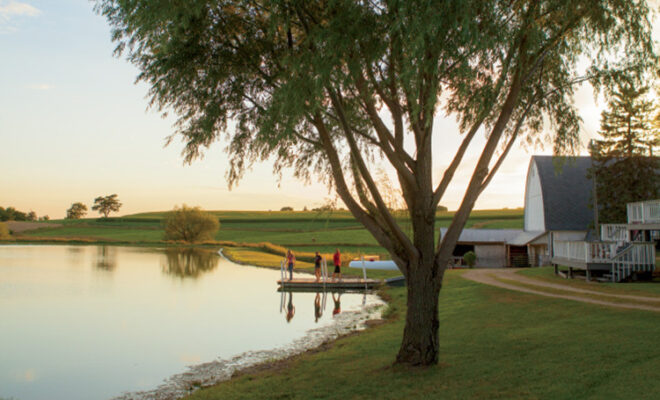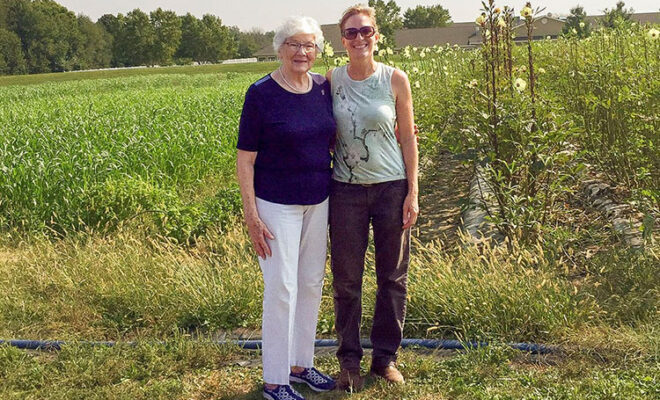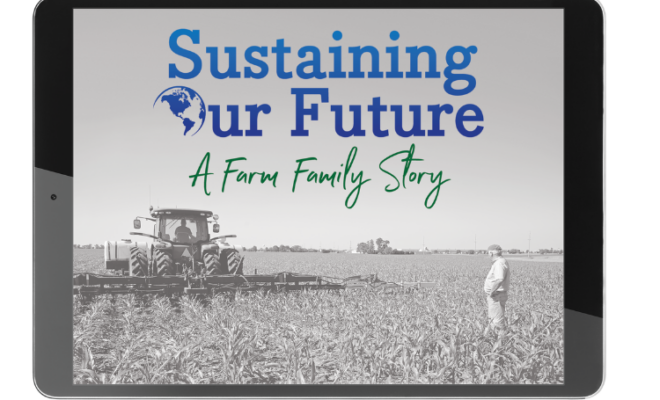
As a kid, Dale Hadden walked and hand-weeded soybean fields many summers on his family’s farm. During breaks, he drank water that flowed from the ends of field tiles, a system of subsurface, perforated tubes that remove excess moisture from a field’s soils.
Farm advancements make “walking beans” a memory, but he still drinks the water.
“Water that leaves my farm should be drinking water,” says Hadden, a fourth-generation crop and cattle farmer in the Jacksonville area. “My grandfather tried to make the farm a better place for my dad to take over, and my dad has worked to make it a better place for me to take over. I want to be a steward of the land so that my children have an opportunity.”

For generations, farmers have shared a deep commitment to land stewardship in ways they knew how. Yet, the information, research and technology now available make today’s farmers the most conservation-conscience in their families’ histories.
Farmers voluntarily use conservation tillage methods that more gently work the soil, if at all. They plant grasses in waterways and along field edges to filter surface water during rains. Many also use global-positioning technology to variably apply only the amount of fertilizer plants in a field need, Hadden says. Farmers realize the importance of keeping essential plant nutrients, such as nitrogen and phosphorous, in the soil where they belong – and out of the water supply.
In that spirit, the Illinois Nutrient Research & Education Council (NREC) committed $2.4 million to 22 research projects in 2015. The projects study ways to improve nutrient management and protect water quality while increasing crop production. Hadden represents Illinois Farm Bureau on the council, a mix of leaders from agriculture, environmental groups and state agencies.
“Our goal is to have the ability to do research that allows us to study how we change our cultural practices and make them more efficient as far as nutrient use and placement,” he says. “We’re testing to make sure that what we are doing is correctly making improvements.”
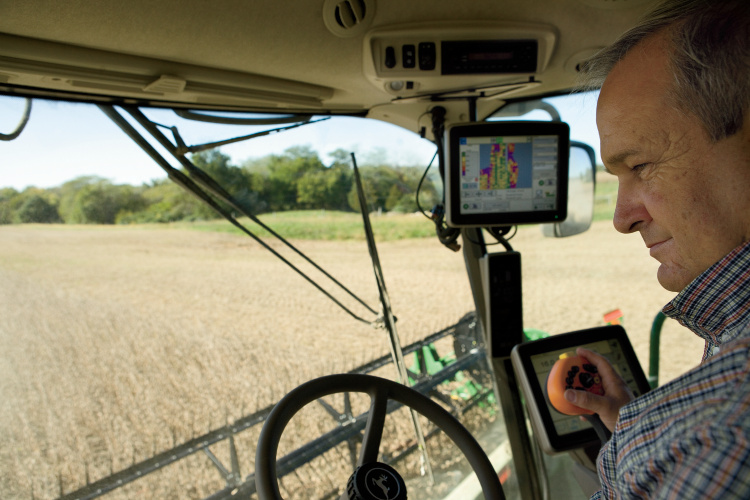
Farmers throughout Illinois fund NREC’s research and education efforts when they pay a fee on the bulk fertilizer they purchase. The council awards grants to nutrient research projects that intend to find practical farming practices that improve soil fertility and address environmental concerns.
One NREC-funded project studies the use of cover crops and how this conservation practice affects nutrient retention and stabilizes the soil, Hadden says. This practice entails a late summer or early fall planting of grasses or legumes that a farmer will never harvest. The establishment of this protective soil blanket of sorts holds the soil in place during winter. Meanwhile, those plants store nutrients for the next crop to use. Hadden has used rye as a cover crop for years. The cover crops double as feed, as his cattle graze on it during winter.
Another trend-setting project studies the effectiveness of multiple applications of nitrogen, an essential nutrient for corn. Trials on Hadden’s farm aid an NREC-funded study that looks at soil nitrate levels at 1 and 2 feet deep.
“I will have soil samples drawn to measure the amount of nitrogen in my soil profile as my growing season goes along,” Hadden explains. “I would add nitrogen only if the soil profile says I need to put it out there for the crop.”
Similarly, NREC-funded research helps farmers change the timing of their applications of nitrogen. Farmers traditionally apply nitrogen in the fall with a stabilizer to help keep it in the soil until the next growing season. Instead, Hadden and farmers like Garry Niemeyer, a corn and soybean grower near Auburn, tout a spoon-fed nitrogen approach. Niemeyer applies nitrogen on a staggered basis throughout the plant’s life cycle at times when the corn plant needs it.
“About four years ago, I adopted the process to put nitrogen on closer to the time frame when the plant needed it the most,” Niemeyer says. “One reason was to keep the fertilizer out of Lake Springfield, period. We also found that when we did that, we increased our yields pretty significantly.”
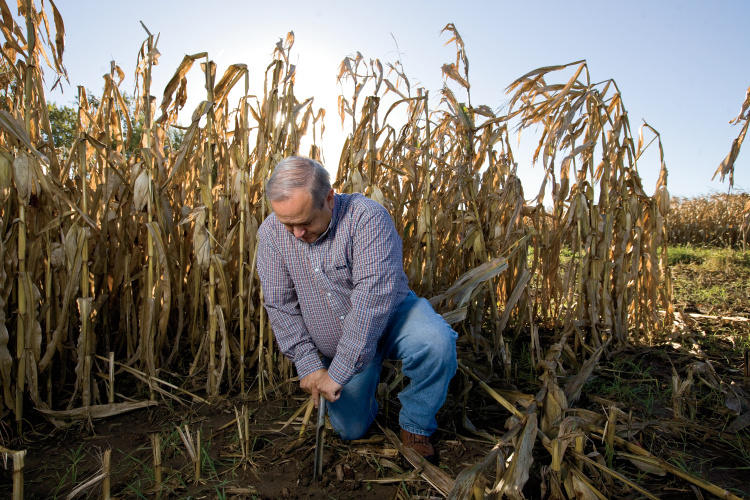
Niemeyer farms in the watershed of Lake Springfield, the source of drinking water for his toddler grandson, baby granddaughter and more than 145,000 other Springfield-area citizens.
The third-generation corn and soybean farmer has served on the Lake Springfield Watershed Resource Planning Committee since the mid-1980s. Soil erosion and contaminants from urban and agricultural sources top the committee’s concerns for Lake Springfield.
Niemeyer voluntarily adopts practices to support this cause. He heralds the use of cover crops, staggered nitrogen applications and filter strips, which are grassy areas between fields and bodies of water. The grass filters surface water that flows across it.
“We are more conservation-minded than we were when I was a kid helping on the farm 40 years ago,” Niemeyer says. “We need to preserve the integrity of every acre we have and take as good of care of it as possible.”


